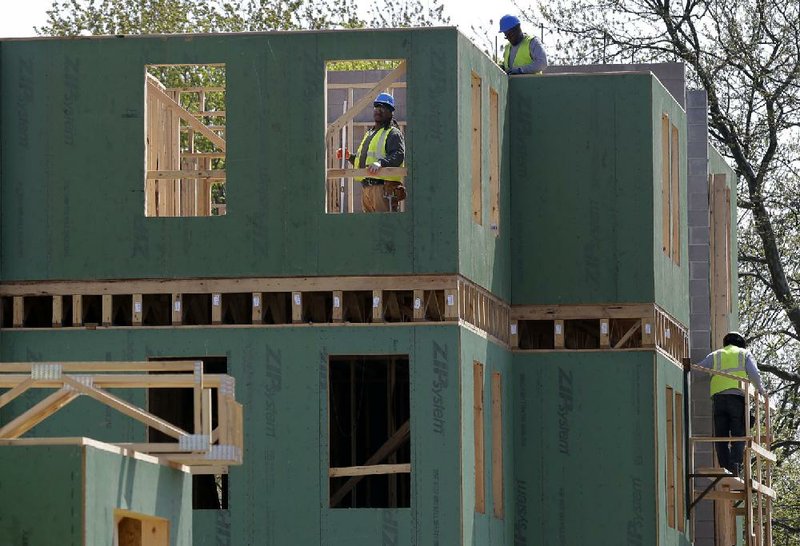Builders sold more U.S. new homes than projected in April as cheaper borrowing costs and job gains drew more buyers into the market.
Sales climbed 2.3 percent to a three-month high of 454,000 homes at an annualized pace from a 444,000 rate in March that was faster than first estimated, the Commerce Department said. The data included revisions back to January 2011. The median selling price rose to a record on sales of more expensive properties.
Demand for new and previously owned homes is sustaining progress in residential construction that is poised to keep fueling the economic expansion. Builders such as Pulte Group Inc .,home-improvement retailers like Lowe’s Cos. and lenders are benefiting from higher property values, lower mortgage rates and a pickup in household formation.
“In terms of growth, housing is the strongest part of the economy right now,” Jim O’Sullivan, chief U.S. economist at High Frequency Economics in Valhalla, N.Y., said before the report. “As employment continues to recover, household formation should recover. Right now both trends look positive.”
The median selling price increased 14.9 percent in April from the same month last year to a record $271,600, Thursday’s report showed. The gain reflected increases in sales of homes costing $400,000 or more. Purchases of homes priced less than$300,000 decreased.
Purchases rose in two of four U.S. regions, led by a 10.8 percent jump in the West. Sales in the South rose, while purchases dropped in the Northeast and Midwest.
The supply of homes at the current sales rate held at 4.1 months. There were 156,000 new houses on the market at the end of the month, the most since October 2011.
Sales of new properties, which are tallied when purchase contracts are signed, are considered a more timely measure of the market than sales of previously owned dwellings, which are counted when a sale is final. New home sales accounted for about 7 percent of the residential market in 2012.
Purchases of previously owned homes climbed in April to the highest level in more than three years, to an annual rate of 4.97 million, the National Association of Realtors reported Wednesday. The median price of a property rose 11 percent, to $192,800, from a year earlier. It was the fifth-consecutive month that property values advanced more than 10 percent year over year, the data show.
Demographic shifts are helping fuel growing demand. More young people are forming households and retirees are moving into new homes, according to Robert O’Shaughnessy, chief financial officer at Bloomfield Hills, Mich.-based Pulte Group, the largest U.S. home builder by revenue.
“There is a limited number of units on the ground,” O’Shaughnessy said at a conference Tuesday. “In many markets you’ve got below three months’ supply of actual housing available for sale. So when folks are actually out shopping, new becomes an even better alternative, being it’s one of the only things around.”
Confidence among home builders improved in May as prospective buyer traffic picked up along with sales, a report showed last week. The National Association of Home Builders/Wells Fargo index of builder confidence rose to 44 from a revised 41 in April, the Washington-based group said.
Further progress in housing may be gradual as as Americans begin to feel the effects of higher taxes that took effect in January at the same time government budget cuts take hold, Lowe’s Chairman and Chief Executive Office Robert Niblock said.
“The housing market continues to show convincing signs of life,” Niblock said on a Wednesday earnings call. “However, growth in other key indicators, particularly employment, slowed in the first quarter. We expect growth to remain modest through midyear as consumers adjust to higher taxes and the fiscal drag intensifies.”
Business, Pages 27 on 05/24/2013

